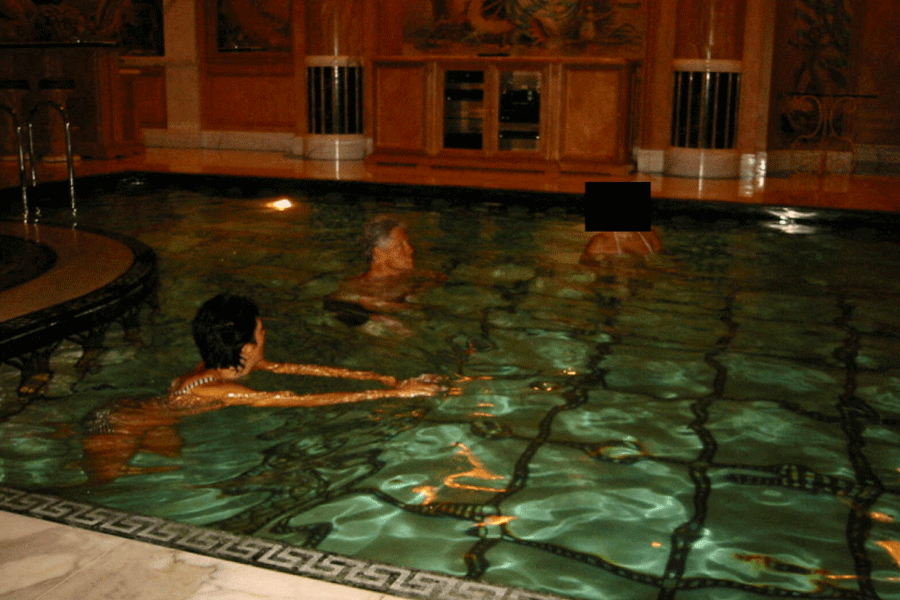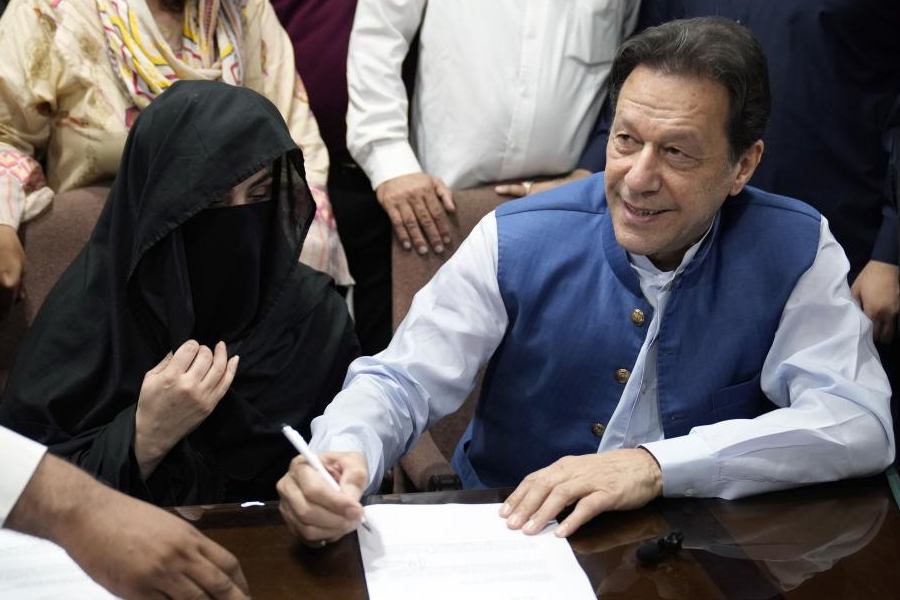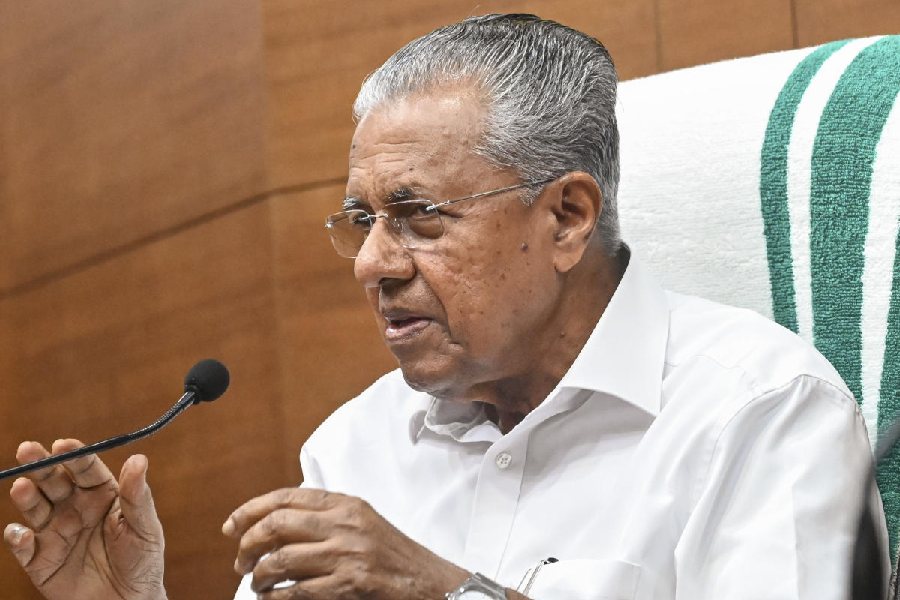 |
Shubhendu Mukerjee may be 35 years old but he still loves toys ? new techno-toys that is. The marketing manager, a self-confessed gizmo freak, has just acquired a new PDA cell phone for himself, persuaded his wife to dump her two-year-old cell-phone and get herself a camera model and replaced his CD player with a sleek home theatre system. What next, you may ask for the family that seems to have everything? Why, a wall-mountable plasma screen for the living area in his house.
?I love technology,? says Mukherjee. ?I find gadgets fascinating and enjoy keeping track of the new ones in the market and the latest features being added to old ones. And while I?ve always loved gizmos, now I can actually buy them without feeling guilty.? Not only does he like new gadgets, he has figured out a relatively painfree way to pay for them. He bought most of his new acquisitions either with credit cards or post-dated cheques so it?s not as if there?s a cash crunch in the household today.
Across upwardly mobile India, it?s the same story. Keeping up with incredibly rapid advances in technology in the home entertainment and communication segments, people are updating their electronic gadgets faster than ever, drastically reducing the average life-cycle of a television set or a cellphone model.
In fact, it?s difficult to believe today that there actually was a time in middle-class India when a television set owned by the family was a black-and white model that was as old as the eldest child. Today, the journey from a 21-inch model to a 29-inch wide screen to a plasma TV, from a functional mobile handset to a camera phone and on to a PDA (Personal Digital Assistant), from a double-cassette tape recorder to a CD-cum-cassette player to a futuristic home theatre system with inbuilt amplifiers is becoming increasingly short.
 |
| “I like to keep adding features to my cell phone and if that means buying more sophisticated models every few months, so be it.” — Prateek Chawla, director, Outbound Travels, Delhi |
Several market studies show that the replacement cycle for an average TV is no longer than three to four years in double-income urban Indian households. Says Chandana Banerjee, associate director (Client Services) of market research company AC-Nielsen ORG MARG, ?The upwardly mobile population is getting tired of their electronic gadgets in record time.? According to her, even three to four years back, the top-end models of home appliances such as televisions, refrigerators and cellphones were selling only in small numbers, but today, these sectors are showing the most growth. In fact, a study by business portal India Infoline says the flat screen television segment is the fastest-growing one in colour TVs. The share of flat screens is expected to double from five per cent of colour TV sales to 10 per cent within a year.
During Durga Puja and Diwali this year, when the nation goes into spending overdrive, sales of colour television sets surged by some 45 per cent, with about 1.5 million sets flying from the shelves in barely 15 days. Though industry experts say that?s not really unusual since sales of consumer durables are always high in this season, there is one glaring new aspect ? the maximum growth came from the high-end colour TV segment. In fact, according to Ravinder Zutshi, vice-president (sales), Samsung India, their sales margins improved this season due to growth in high-end CTVs with the 29-inch, flat screen colour TV being the most keenly sought model.
The zooming sales could also be explained by the fact that multiple TV families are not uncommon in metropolitan India today. Let?s go back to Mukherjee. When he updates to his wall-mountable plasma screen for the living area, he plans to shift his old 29-inch flat screen to his bedroom. And he?s tinkering with the idea of buying a smaller 14-inch bubblegum-coloured set for the kids. Customisation is the name of the game and in keeping with the trend of consumers pushing off older TVs to the bedroom, the kids? room or even the kitchen, companies have started providing options for all these rooms. ?The days of one-TV families are over. Now, we try to give customers the option of having different kinds of TVs and music systems for different rooms. The display and aesthetics of these sets also differ according to what use they?ll be put to,? says Sony India?s Sabiha Kidwai, product head, colour TVs and projection TVs.
Also, as is happening with cars, first-time customers are buying the bigger, better and costlier products in cell phones and entertainment systems. The first TV set a newly-married working couple will buy is no longer a basic 14-inch colour TV. Since they can buy a trim 21-inch Sony Wega FD Trinitron for as little as Rs 13,990, why would anyone want to get stuck with a big, clunky model anyway?
When the cell phone revolution started, counting yourself as one of Generation Connect was all that mattered. Today, it?s not enough to own a mobile phone. In fact, a mobile phone is not even just a phone any more. It?s your personal computer, camera, music system, VCD player and even your human personal assistant all rolled into one. Says Prateek Chawla, the 40-something director of travel company Outbound Travels, ?I?d feel totally lost without my cell phone. It almost manages my life for me, keeping track of my appointments, my contacts, important events in my personal life. Since it?s also WAP-enabled, I use it to surf the net and connect with a computer. I can stay in touch with my work even when I?m on the move.?
Though Chawla is sold on all kinds of technical gizmos, mobile phones are his newest passion. He does like to keep himself up-to-date with technology as far as entertainment systems are concerned (he?s the proud owner of a projection TV and a home theatre system), but he admits that changing mobile phones is easier and cheaper. ?It?s like women and jewellery or designer clothes,? laughs Chawla. ?I like to keep adding more features to my cellphone.? And if the only way to do it is by buying more sophisticated models every few months, so be it. Chawla has a sleek Nokia 6230 but what he is hankering after is a 9500 Communicator, a mammoth mobile that proud possessors claim is as good as a digital office.
His passion for gee-whizz cellphone gadgetry even occupies his spare time when he likes nothing better than to surf the Internet to keep track of better deals and better models. He also likes to swap notes with his other gizmo-crazy friends. Thanks to all of them, the replacement market for mobile phones is roaring ahead. According to Pankaj Mahendroo, president, Indian Cellular Association, ?Out of the 17 or 18 million mobiles sold in the last year, at least 4 million were second or third time phones. That means the replacement segment accounts for more than 20 per cent of the entire market ? a considerable number.?
What?s driving the market is the fast evolving technology and its apparently irresistible siren call. ?The advances in cell phone technology in the last couple of years is simply astounding and beyond what anybody could have imagined a few years ago,? says Sanjay Behl, head, marketing of Nokia India. The attitudinal edge that a smart cell phone or home theatre system gives you is driving the technology in these sectors to develop faster than for say, refrigerators or washing machines. Home appliances not on everyday display do have futuristic top-end models (refrigerators with TV screens, robotic vacuum cleaners, detergent-free washing machines) but buyers aren?t snapping these up in the same numbers, says LG?s Sanjiv Jain, product head, CTVs. Face it, says Jain, ?a great-looking plasma TV or home theatre system gives away more about your lifestyle and attitude than the most sophisticated washing machine.?
 |
| “I need technology to keep abreast of things. But it also has an image-rub-off on my clients.” — Sanjeev Jasani, account director, O&M, Calcutta |
As Sanjeev Jasani, a Calcutta-based advertising executive who owns a Motorolo A760, a PDA phone, and is planning to go for a Nokia Communicator 9500 soon, says, ?I need technology primarily to keep abreast of things. But I must admit it also does have an image rub-off. The fact that I use high-tech gadgets does have an impact on my clients.?
Meanwhile, mobile handsets makers have found while older professionals replace their phones when they discover one with more power-packed features that enable them to carry their office around with them, youngsters are sold on fancy features that make them stand out in a crowd. ?A cell phone is an attitude and lifestyle statement for them,? says Behl. So while your 45-year-old executive will go for a 9500 Communicator, the yuppie college student will want to upgrade to the -Gage QD, a specialist phone for mobile gaming. With more and more young people starting work earlier, having access to plastic money, easy loans and equated monthly installments or EMIs, the youth (20-30 age group) is an extremely important segment for cell phone marketing. According to TNS India?s annual CellTrack survey in 2004, two out of every five cellphone subscribers are below 25 years of age, while two-thirds are below 35. ?Worldwide, mobile technology is adopted faster by the younger people,? says Abraham Karimpanal, vice-president, TNS India. According to the TNS survey, out of several South-east Asian countries included in the study, handsets in India seem to have the shortest life-cycles.
Not surprising, considering how school and college-goers today seem more interested in comparing their mobile phone models rather than exam marks! Whether it?s peer pressure, an ever more acquisition-hungry mindset among young and old or a plain wish to keep up with the times, change seems to be the only constant in a gizmo-crazy world.
Go for it
• The Samsung Wireless Home Theatre system (HTDS 490): With a 4000 W PMPO sound, it can play DVDs, VCDs, MP3s, WMAs. It also has detachable wireless speakers and automatic sound calibration, preset equalisers and Dolby/DTS sound. Costs Rs 39,990.
• The LG Flatron 29 inches (RT-29FC80VC): With great picture quality and 1200W sound, woofer and Turbo Sound, this is pure value for money. Has 15 inbuilt games with an additional game remote, channel naming and channel scan features, along with a digital comb filter and LG?s special Golden Eye technology. Costs Rs 28,200.
• The Sony Rear Projection (KP-ES43ME1): This TV has digital quick focus and a ?super bright? high contrast screen as also a DVD component terminal. Costs Rs 1,50,700.
• The new Nokia 9500 Communicator: 80 MB memory and a multimedia card slot for more storage. Can work with office documents including excel sheets. With Nokia PC Suite and OMA Data Synchronization, you can exchange data between your Nokia 9500 Communicator and a compatible PC. Costs approximately Rs 41,300.
• The Sony Ericcson S700i: Has a 1.3 megapixels integrated camera. Can store photos and video clips that can be transferred to other Sony memory stick-compatible products. Costs Rs 32,995.
• Motorola?s Moto Razr V3 smart phone: This soon-to-be-launched camera phone has Bluetooth wireless technology, Quad band, MPEG video facility and speaker phone. You can also download and play MP3 ringtones on this one. Costs approximately Rs 39,000.











